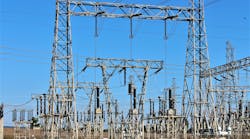The present electric power delivery infrastructure was not designed to meet the increased demands of a restructured electricity marketplace, the energy needs of a digital society, or the increased use and variability of renewable power production. As a result, there is a national imperative to upgrade the current power delivery system to the higher performance levels required to support continued economic growth and to improve productivity to compete internationally. To these ends, the smart grid integrates and enhances other necessary elements including traditional upgrades and new grid technologies with renewable generation, storage, increased consumer participation, sensors, communications and computational ability.
According to the Energy Independence and Security Act of 2007, the smart grid will be designed to ensure high levels of security, quality, reliability, and availability of electric power; improve economic productivity and quality of life; and minimize environmental impact while maximizing safety. Characterized by a two-way flow of electricity and information between utilities and consumers, the smart grid will deliver real-time information and enable the near-instantaneous balance of supply (capacity) and demand at the device level.
The primary goal of this report, which is a partial update to an earlier report (EPRI 1011001), is to initiate a stakeholder discussion regarding the investment needed to create a viable Smart Grid. To meet this goal, the report documents the methodology, key assumptions, and results of a preliminary quantitative estimate of the required investment. At first glance, it may appear the most obvious change from the 2004 report is the significant increase in projected costs associated with building the smart grid. In actuality, the increased costs are a reflection of a newer, more advanced vision for the smart grid. The concept of the base requirements for the smart grid is significantly more expansive today than it was seven years ago, and those changes are reflected in this report....(Read more...)

